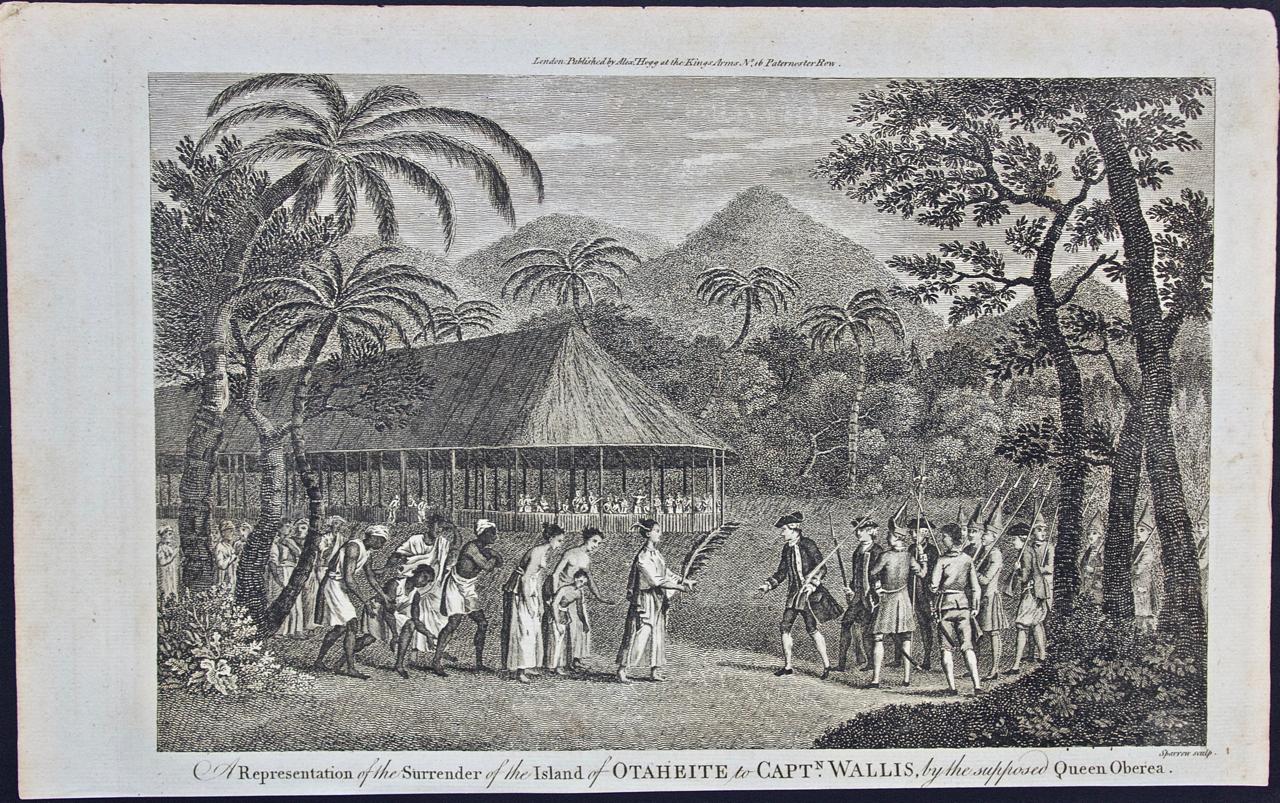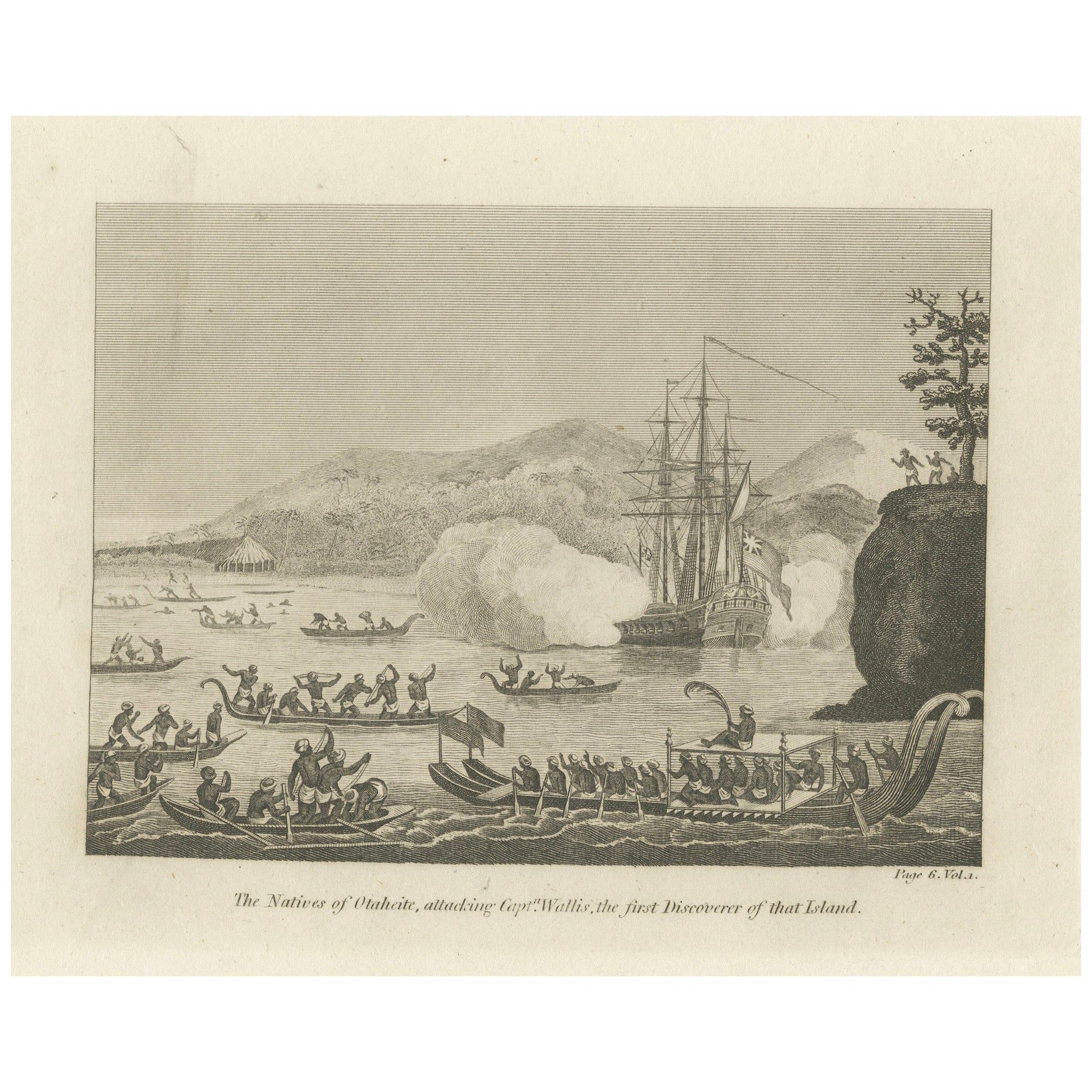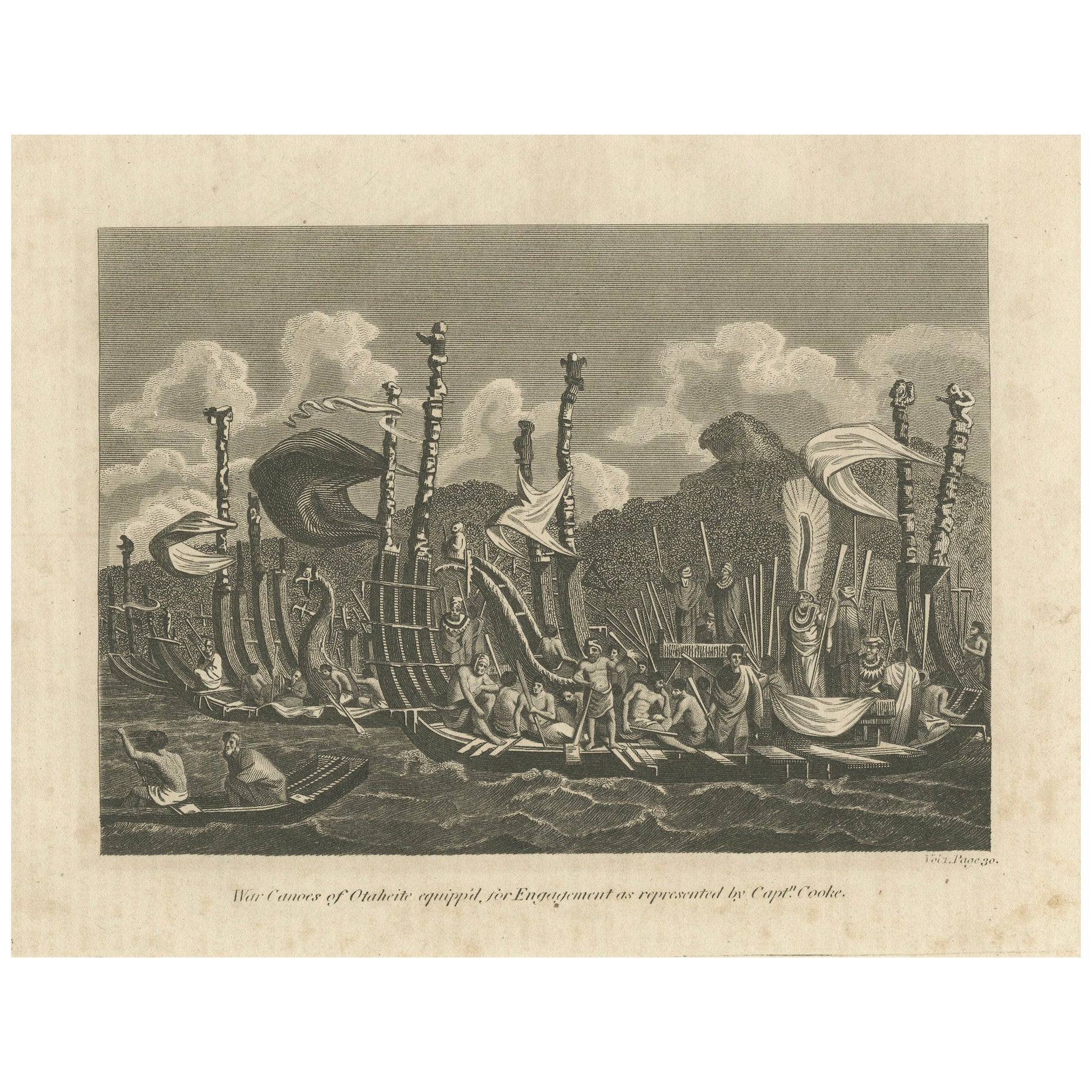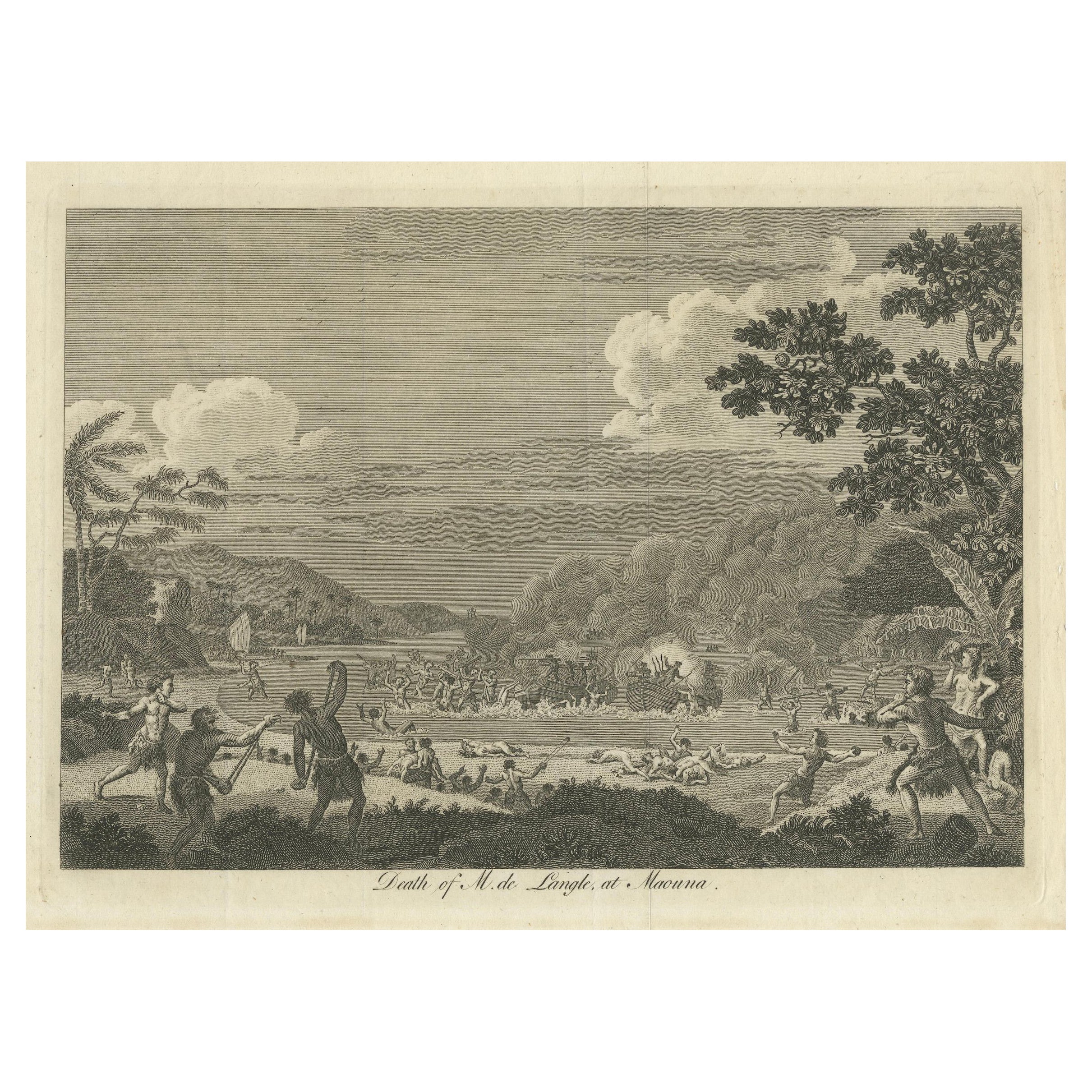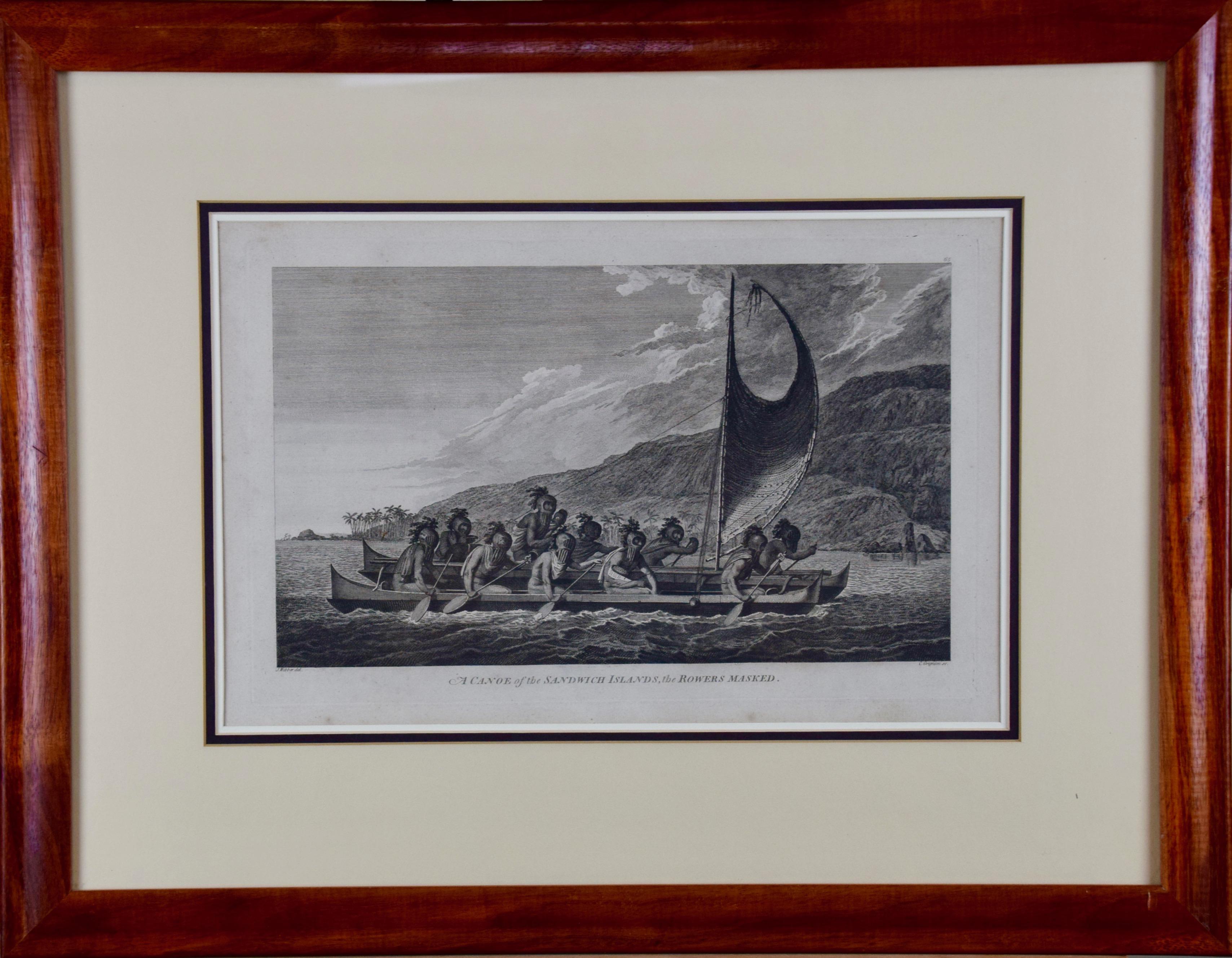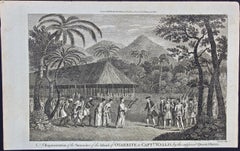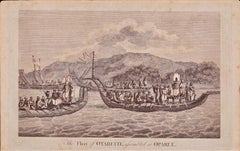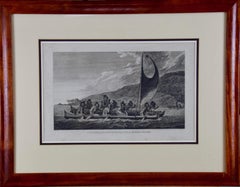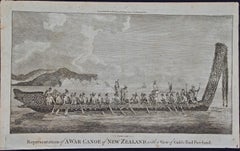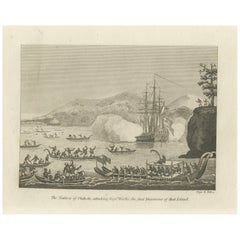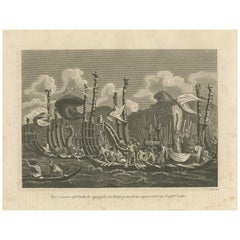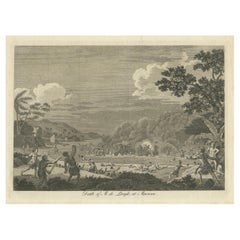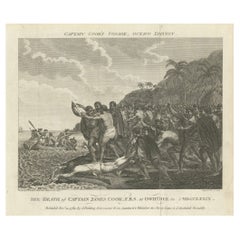Items Similar to Attack on Captain Wallis When He Discovered Tahiti: Original 18th C. Engraving
Want more images or videos?
Request additional images or videos from the seller
1 of 5
UnknownAttack on Captain Wallis When He Discovered Tahiti: Original 18th C. Engraving1785
1785
$220
$27520% Off
£168.34
£210.4320% Off
€192.67
€240.8420% Off
CA$310.70
CA$388.3720% Off
A$337.68
A$422.0920% Off
CHF 180.96
CHF 226.2020% Off
MX$4,099.98
MX$5,124.9720% Off
NOK 2,271.88
NOK 2,839.8520% Off
SEK 2,106.83
SEK 2,633.5320% Off
DKK 1,438.99
DKK 1,798.7420% Off
About the Item
"A Representation of the Attack on Captain Wallis in the Dolphin by the Natives of Otaheite (Tahiti)" is an engraving created by the artist Sparrow based on an engraving in John Hawkesworth's publication of the account of the 1st voyage of Captain James Cook's in which he returned to Tahiti two year's after its discovery by Wallis. This engraving appeared in Alexander Hogg's publication "A New, Authentic, and Complete Collection of Voyages Round the World" published in London in 1785.
The engraving depicts Captain Wallis' ship the Dolphin under attack by Tahitians in canoes who had never seen a European before. The canoe in the right foreground is a large ocean-going double-hulled canoe that is partially covered, presumably for the Tahitian king. Smoke is seen about the ship, presumably from the canons used to repel the attack. British Captain Wallis discovered Tahiti in June 1767. His discovery led to the subsequent 1st voyage of then Lieutenant James Cook who was sent in 1769 by the British Admiralty to observe the transit of Venus across the sun at what is now known as Point Venus on the north portion of the island. Cook went on to explore New Zealand and the east coast of Australia.
This is an excerpt from Captain Wallis' description of the attack: At six o’clock the next morning, we began to warp the ship up the harbor, and soon after, a great number of canoes came upon her stern. As I perceived they had hogs, fowl, and fruit on board, I ordered the gunner, and two midshipmen, to purchase them for knives, nails, beads, and other trinkets. . . . By eight o’clock, the number of canoes was greatly increased, and those that came last were double, of a very large size, with twelve or fifteen stout men in each. I observed, with some concern, that they appeared to be furnished rather for war than trade, having very little on board except round pebble stones. . . . [T]here was a universal shout from all the canoes, which at once moved towards the ship, and a shower of stones poured into her on every side. . . . When the great guns began to fire, there were not less than three hundred canoes about the ship, having on board at least two thousand men; many thousands were also upon the shore. . . . Among the canoes that were coming toward the bow, there was one which appeared to have some Chief aboard, as it was by signals made from her, that the others had been called together: it happened that a shot, fired from the guns forward, hit this canoe so full as to cut it asunder. As soon as this was observed by the rest, they dispersed with such haste that in half an hour there was not a single canoe to be seen.
The engraving is printed on laid chain-linked paper. The sheet measures 9.5" in height and 15.25" in width. There is a tiny chip at the lower edge of the sheet and three at the upper edge. The print is otherwise in very good condition.
Alexander Hogg was an 18th and early 19th century publisher of illustrated books of architectural and historical prints, as well as maps. His publishing house was located in London at the Kings Arms on Paternoster Row.
- Creation Year:1785
- Dimensions:Height: 9.5 in (24.13 cm)Width: 15.25 in (38.74 cm)
- Medium:
- Period:1780-1789
- Framing:Framing Options Available
- Condition:
- Gallery Location:Alamo, CA
- Reference Number:Seller: # 8321stDibs: LU1173216388262
About the Seller
5.0
Platinum Seller
Premium sellers with a 4.7+ rating and 24-hour response times
Established in 2011
1stDibs seller since 2019
298 sales on 1stDibs
Typical response time: 1 hour
- ShippingRetrieving quote...Shipping from: Alamo, CA
- Return Policy
More From This Seller
View AllSurrender of Tahiti to Captain Wallis: An Original 18th C. Engraving
By John Webber
Located in Alamo, CA
"A Representation of the Surrender of the Island of Otaheite to Capt.n Wallis, by the Supposed Queen of Oberea" is an original 18th century engraving created by Sparrow, from a drawi...
Category
1780s Landscape Prints
Materials
Engraving
$200 Sale Price
20% Off
The Fleet of Tahiti displayed for Captain Cook: An Original 18th C. Engraving
By William Hodges
Located in Alamo, CA
"The Fleet of Otaheite, Assembled at Oparee" is an original 18th century engraving from a drawing by William Hodges (1744-1797), who was the artist who accompanies Captain Cook on hi...
Category
1780s Landscape Prints
Materials
Engraving
Sandwich Islands Canoe (Hawaii): Framed 18th C. Engraving Captain Cook's Journal
By John Webber
Located in Alamo, CA
"A Canoe of the Sandwich Islands, the Rowers Masked" is an engraving created by Charles Grignion, from a drawing by John Webber (1752-1793), who was the artist on Captain James Cook's 3rd and final voyage of discovery. It is Plate 65 in the atlas of "A Voyage to the Pacific Ocean Undertaken by the Command of His Majesty, for Making Discoveries in the Northern Hemisphere", the official British Admiralty sanctioned journal published upon completion of the voyage in London in 1784 by Strahan & Cadell.
This famous image of ten Hawaiian rowers transporting a priest who is carrying a feather-covered image of Kukailimoku, the Hawaiian god of war. The priests and paddlers are all wearing gourd masks in their double-hulled canoe with an upright lateen woven sail. Each hull was shaped from a single large Koa log harvested from island rainforests, where they were carved before being transported to the coast.
This engraving is presented in a Koa wood frame and a white mat. There are occasional faint spots, but the print is otherwise in very good condition. Koa is the same wood as was used to make the canoe. Koa wood is legendary in Hawaii. Not only is this amazing wood native to Hawaii, but it is known for the deep rich colors and varied grain pattern. Koa has an honored heritage in Hawaii and is highly revered and sacred. The word “koa” means “warrior” in Hawaiian. The warriors of King Kamehameha the Great, created canoes and weapons from a wood plentiful on the Big Island of Hawaii. This wood became synonymous with the warriors themselves, and it became known as koa. The frame measures 20.75" high, 26.75" wide and 0.88" deep.
There are three other engravings listed from the official journal of Captain Cook's 3rd voyage available that are presented in identical Koa wood frames and mat (LU117324682022, LU117324684052, LU117324684062). They would make a wonderful grouping for a display of 2, 3 or 4 prints. A discount is available for a grouping depending on the number of items included.
Hawaii was discovered by Captain Cook (1728-1779) during this voyage. Hawaii was originally called The Sandwich Islands in honor of The Earl of Sandwich...
Category
1780s Landscape Prints
Materials
Engraving
New Zealand War Canoe: Original 18th C. Engraving from Captain Cook's 1st Voyage
Located in Alamo, CA
"War Canoe of New Zealand, with a View of the Gable End Foreland" is an engraving created by Thomas Prattent, from a drawing by Sydney Parkinson, who was the artist on Captain James ...
Category
1780s Landscape Prints
Materials
Engraving
A View of Kauai, Hawaii as Seen by Captain Cook: An Original 18th C. Engraving
By John Webber
Located in Alamo, CA
"An Inland View in Atooi, One of the Sandwich Islands (Kauai, Hawaii)" is an original 18th century engraving from a drawing by John Webber (1751-1793), who was the artist who accompa...
Category
1780s Landscape Prints
Materials
Engraving
Boats of the Friendly Isles, Tonga: Original 18th C. Engraving from Captain Cook
By William Hodges
Located in Alamo, CA
"Boats of the Friendly Isles" is an original 18th century engraving from a drawing by William Hodges (1744-1797), who was the artist who accompanies Captain Cook on his second voyage...
Category
1780s Landscape Prints
Materials
Engraving
You May Also Like
Encounters at Dawn: The Standoff at Tahiti with Captain Wallis Engraved, 1801
Located in Langweer, NL
Title: "The Natives of Otaheite Attacking Capt. Wallis, The First Discoverer of that Island"
This engraving depicts a significant historical encounter between the natives of Tahiti ...
Category
Antique Early 1800s Prints
Materials
Paper
$531 Sale Price
20% Off
Free Shipping
Naval Might of Tahiti: War Canoes Observed by Captain Cook, circa 1817
Located in Langweer, NL
Title: War Canoes of Otaheite equipp'd for Engagement as represented by Captn. Cooke
This detailed engraving depicts the "War Canoes of Otaheite (Tahiti), as represented by Capt'n C...
Category
Antique Early 19th Century Prints
Materials
Paper
$227 Sale Price
20% Off
Free Shipping
The Death of Commander Fleuriot de Langle and His Men at Maouna, Samoa, 1797
Located in Langweer, NL
The engraving depicts a harrowing and chaotic scene from an 18th-century exploration, specifically the tragic event involving Commander Fleuriot de Langle and his men. The scene is s...
Category
Antique 1790s Prints
Materials
Paper
$398 Sale Price
20% Off
Free Shipping
Engraving of The Death of Captain James Cook at Kealakekua Bay, Hawaii, 1784
Located in Langweer, NL
A historical copper engraving depicting "The Death of Captain James Cook, F.R.S. at Owhyhee in MDCCLXXIX" (1779). This engraving is particularly sig...
Category
Antique Late 18th Century Prints
Materials
Paper
$398 Sale Price
20% Off
Free Shipping
Old Military Scene of Dutch Ships Bombing Atchin in Sumatra, Indonesia, 1784
Located in Langweer, NL
Antique print Indonesia titled 'Bombardement van Atchin door de Nederlandse Vloot'. Antique print depicting a military scene in Indonesia. Originates fr...
Category
Antique 19th Century Prints
Materials
Paper
$247 Sale Price
20% Off
B.West Engraving "Naval Battle, Battle of the Houge" 18th Century
Located in Beuzevillette, FR
This magnificent engraving is entitled "Battle of La Hougue" by the engraver E.C Voysard after Benjamin West.
It depicts the Battle of Barfleur- La Hougue,...
Category
Antique 18th Century French Prints
Materials
Paper
$332 Sale Price
20% Off
